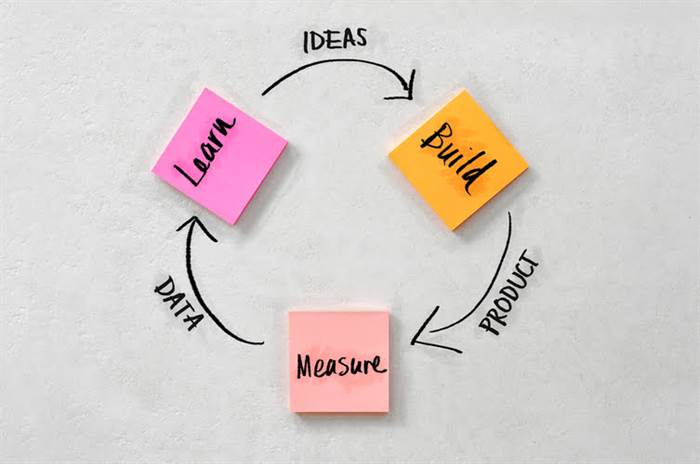Content
You can get around this requirement by relying on data synthesis, a process which generates fake data to resemble in approximation the data set your end-users expect. This enables you to model behaviors with your prototype without going the extra mile to build connectors in advance of needing them. With a recent prototype prepared, RAD developers present their work to the client or end-users. They collect feedback on everything from interface to functionality—it is here where product requirements might come under scrutiny.
Faster Financial Software Development Using Low Code: Focusing on the Four Key Metrics – InfoQ.com
Faster Financial Software Development Using Low Code: Focusing on the Four Key Metrics.
Posted: Fri, 19 Nov 2021 08:00:00 GMT [source]
The client judges the quality of the solution by what they can interact with—and often, all they interact with is a facade. As a consequence, some developers forego best practices on the back-end to accelerate development of the front-end-focused prototype. When it’s time to deliver a working product, they patch up the jerry-rigged server code to avoid a refactor. Although contrived back in the 1980s, the use of rapid application development is currently proliferating and used as an expediting methodology for digital transformation in 2018 and beyond. During the 1970s, software engineering projects followed the waterfall model, a traditional engineering process, which is similar to the methodology applied to building bridges and huge physical plants. Development begins only after all the specifications were completed. Then, after months or sometimes years of development, the stakeholders and end users of the software get their first look at the completed software product.
Night Mode Support For Android 10 Applications
As soon as these aspects are agreed on and the systems are built and refined, the new systems or part of systems are tested and then introduced to the organization. Because RAD can be used to create new ecommerce applications for which there is no old system, there is often no need to run the old and new systems in parallel before implementation. During the RAD design workshop, users respond to actual working prototypes and analysts refine designed modules based on user responses. Through prototyping, the development team can easily evaluate the feasibility of complex components.

With that said, each of these frameworks has definite strong points. If you’re working with a single roomful of the best and brightest, you’ll see fantastic results implementing RAD. You might run into hurdles using SAFe when the one and only name of the game is SPEED. True, SAFe is faster than most other options at scale, the simple fact is that larger organizations just can’t generally move as fast as smaller ones. So by definition, if you’re big enough to be considering SAFe for its scalability, speed probably isn’t your number one priority. Cutover – The phase of testing, feature integration and user training.
Cons Of Rapid Application Development
This saves time and money by solving common design issues before product development begins, helps businesses to reach market quicker, and puts the focus of development on the needs of the end-user. This approach emphasizes the rapid delivery of an application in complete functional components. Rather than creating tasks and schedules, all time is “time-boxed” into phases called “sprints.” Each sprint has a defined duration with a running list of deliverables, planned at the start of the sprint. Deliverables are prioritized by business value as determined by the customer. If all planned work for the sprint cannot be completed, work is reprioritized and the information is used for future sprint planning.

When used in software development the prototyping techniques change, but the concept is the same. The prototyping tools are either digital or on paper, and the methodology is the most critical piece of the development process. In fact, for software development and product design, smarter workflows and cost-effective methodologies are a form of rapid prototyping technology. One of the first decisions we face for each of our project implementations at Segue is “Which development methodology should we use? If this is not something you’ve worked with before, a definition of development methodology is in order; put very simply, it’s a way of organizing the work of software development. This is NOTabout a style of project management or a specific technical approach, although you will often hear these terms all thrown together or used interchangeably.
But especially in the case of rapid application development where developers are building prototypes at an alarmingly fast rate, testing is of crucial importance. Modern enterprise needs have transformed with increasing demand from the digital workforce, agile operations, and the tech-savvy marketplace. One thing virtually all approaches to RAD have in common is that there is much more interaction throughout the entire life-cycle between users and developers. In the waterfall model, users would define requirements and then mostly go away as developers created the system. In RAD users are involved from the beginning and through virtually the entire project.
Rapid application development was a response to plan-driven waterfall processes, developed in the 1970s and 1980s, such as the Structured Systems Analysis and Design Method . One of the problems with these methods is that they were based on a traditional engineering model used to design and build things like bridges and buildings. Software can advantages of rad radically change the entire process used to solve a problem. As a result, knowledge gained from the development process itself can feed back to the requirements and design of the solution. Plan-driven approaches attempt to rigidly define the requirements, the solution, and the plan to implement it, and have a process that discourages changes.
What’s The Difference? Agile Vs Scrum Vs Waterfall Vs Kanban
Basically, developers gather the product’s “gist.” The client provides their vision for the product and comes to an agreement with developers on the requirements that satisfy that vision. If you are considering waterfall vs. RAD or even RAD vs. Agile, the key questions you should ask have to do with the nature of the project and what kind of developers you have.
And project managers have taken notice—particularly among teams in industries like software development where technology, objectives, and targets are in constant flux. Based on the scale, resources, and requirements of your project you can choose the methodology that works best for your development process. The project’s complexity might change day to day; therefore, setting a precise deadline and budget might become problematic for the development. According to the time-frame, the whole story might not happen because the main focus is adding more features to the final product.
Because of this RAD is often favored for smaller projects, but is less usable for more complex projects, which benefit from the structure of an Agile methodology. Rapid Prototyping originated as part of the manufacturing process, where computer-aided design is used by design teams to create and build physical, sometimes functional prototypes. Such waterfall model can potentially cause challenges for the customer because they are putting their time and resources into a project that is not going to have a substantial MVP for quite some time. The altering of the software after the development can be lengthy, and in some cases impossible to complete after the product reaches a certain point in development. In general, rapid application development can refer to development methodologies and technologies that prioritize fast delivery.
This focus ensures the time and resources are spent where they’ll have the biggest impact and avoids the design phase getting bogged down by minor details. Used properly, rapid prototyping should conform to the Pareto Principle, covering the 20% of features that deliver 80% of the impact. Many development teams use Rapid Prototyping as part of a Rapid Application Development methodology. Like Agile, RAD uses iterative improvements, but it differs in that it emphasizes speed and flexibility at the expense of structure.
Consequently, software is more robust, less error-prone, and better structured for future design additions. On the other hand, Agile model can only be executed by professionals that have been previously exposed to concepts such as continuous testing. However, for lack of documentation, upcoming developers are not adequately guided on the final outcome of the projects. It is therefore only suitable for complex projects that involve large number of developers.
Here we are going to provide a detailed comparison of these three methods. By submitting this form you consent to the processing of your personal data by OutSystems as described in our Terms and our Privacy Statement. We’ve covered some advantages of RAD already, but let’s restate them and expand. However, one must keep in mind that, to develop anything on a RAD platform, the requirements must be well defined.

Everyone evaluates both the design and usability before submitting feedback. Prototyping – The team creates one or more initial rapid prototypes. This is a visual representation of the design specifications as set out in the requirements document. The prototype may be either low-fidelity or high-fidelity (more to come on high- and low-fidelity prototypes) and may be interactive or non-interactive. The Application Generation step is when all the information gathered is coded, and the system that is going to be used to create the prototype is built.
The disadvantages of RAD usually aren’t enough to turn people away from enjoying the benefits of this methodology. But just in case, you should review the downfalls of employing rapid development for your software development process. Agile methodology for software development that seeks to speed up the development process without sacrificing quality. The waterfall approach is a traditional methodology that’s not very common in software development anymore. For many years, the waterfall model was the leading methodology, but its rigid approach couldn’t meet the dynamic needs of software development.
The RAD meaning becomes clearer when you see that speed is always of the essence where this model is concerned. The Rapid Application Development method is relatively inexpensive as compared to the other development models. At times you may need to hire technology experts and give them fitting salaries but on the brighter side, if you’ve got the staff then you can get your idea developed much quicker than any other model. Although the benefits of RAD may outweigh its disadvantages, there is no software development method that is flawless. Let’s examine few barriers that you are most likely to encounter when implementing RAD into a new project. Once the scope of the project is chalked out, it’s time to dive into development.
This phase’s main task is to put the design prototypes into beta systems and then into a working model. The finished product is implemented and goes for launch in this phase.
- Stakeholders communicate and learn through experience, quickly and easily identifying what does and doesn’t work.
- With the help of agile methods, the customer is in total control of his project and achieves rapid software implementation.
- Components are moved to a live production environment, where full-scale testing occurs to identify product bugs.
- Most software development teams use a combination of methodologies and frameworks to fit their team size, team dynamics, and the type of work being completed.
- These are all integrated in the end to create a complete software product.
RAD was a precursor to agile project management, becoming increasingly popular with agile businesses looking for methods that keep pace with their growing business and client needs. windows server 2016 Focusing on rapid prototyping, release cycles and iterations over costly planning, rapid application development is driven by user feedback, rather than strict planning.
Agile enterprises like @Tirupatiuk have already started adopting rapid application technologies. Read more about why #enterprises should opt for rapid application development vs custom software development here- https://t.co/Nr04dJI3el pic.twitter.com/BmIpN6qWDO
— WorkOnGrid (@workongrid) November 4, 2020
Therefore, if the investor wants a change during the development process, it won’t be possible. Each phase of the project follows into the next stage; therefore, it is called Waterfall methodology. It is worth mentioning that each project phase happens once, so you can not come up when you come down. Agile method suits mostly complicated projects with large developer teams. As of now, agile has been proved to be less suitable for smaller and low-budget projects. As testing is done at the end of the project, rectifying and rebuilding takes a lot of time and resources. Thus, we can conclude that the RAD methodology is much more malleable, emphasizing the quality results exactly and in the time they are delivered, without any major rules.


